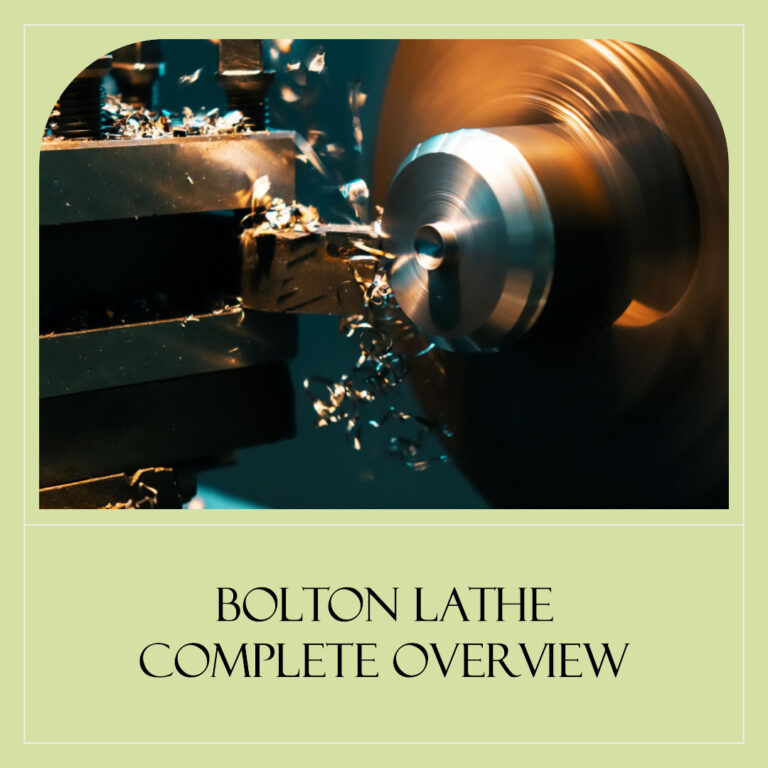what is a drawbar on a milling machine?

A milling machine can seem like a metal enigma, but let’s zero in on an overlooked yet crucial part: the drawbar. This component is the silent powerhouse behind smooth operations. Whether you’re an experienced operator or a newbie, this article is your go-to guide.
What is a Drawbar For on a Milling Machine? [Explained]
A milling machine expertly shapes materials like metal, wood, and plastic. For it to work well, every part must be in sync. And don’t overlook the drawbar; it’s a critical member of this team.
Imagine putting together a jigsaw puzzle. There’s always that one piece that makes it all fit. In a milling machine, that piece is the drawbar. Its main job is holding the rotating cutter tight. Without it, you risk safety and accuracy.
The drawbar is the unsung hero of milling. While it stays behind the scenes, it ensures the cutters— the real stars—perform well. It makes sure they rotate smoothly and cut with precision.
How is a Drawbar Used?
The air smells of metal, and our milling machine stands ready. Let’s focus on the drawbar to see how it works in real time.
The drawbar is basically a long bolt running through the machine’s spindle. One end grips the tool; the other end sticks out from the machine’s top. To insert a new tool, you thread the drawbar through and tighten it. Typically, a special wrench ensures the fit is just right.
Need to change tools? It’s easy with the drawbar. Just loosen it, switch out the old tool for the new one, and tighten it back up. Your machine is now ready for its next task.
It sounds simple, but don’t overlook the drawbar’s role. It’s what keeps the tool and machine in sync, ensuring smooth operation.
What is Drawbar Pull?
Drawbar pull is like an internal tug-of-war in your milling machine. It’s the force that keeps the tool right where it needs to be.
This force is measured in pounds or newtons. Too little, and your tool might wobble and ruin your work. Too much, and you stress the spindle, hurting accuracy.
Think of checking drawbar pull as a regular check-up for your machine. Tools like a drawbar force gauge help you monitor it. This ensures key parts, like the spindle and tool, work well together.
How to Choose the Best Drawbar?
Choosing the right drawbar is like setting a strong foundation for a building. This choice affects both the efficiency and lifespan of your milling machine. Consider this your go-to guide for making an informed decision.
Machine Fit: Ensure the drawbar fits your milling machine perfectly. A bad fit hurts both the tool and machine’s performance.
Material: Choose drawbars made from strong stuff like alloyed steel. These last longer and keep a steady force.
Installation: Time is precious. Pick drawbars that are easy to install, no special tools needed.
Maintenance: All parts wear out. Look for drawbars with clear maintenance guides and wear signs.
Cost: Don’t just go for the cheapest option. A quality drawbar is a long-term save, reducing replacements and downtime.
Reviews: Talk to colleagues or search online. Real user feedback can offer valuable insights.
Vendor: Finally, think about where you’re buying from. A reputable vendor usually offers solid after-sales service and warranties.
Machine Nuances: Every milling machine has its own quirks and demands. So, consider these tips but adapt them to fit your specific machine.
Your Go-To Drawbar: Imagine a top-notch drawbar as your ideal travel companion. It ensures a smooth journey and delivers precision, hassle-free.
Conclusion:
The drawbar might look like a minor detail, but it’s vital to your milling machine’s performance. It’s the unsung hero that keeps your tools secure and your work accurate.
We’ve covered its role, how it operates, and what to consider when choosing one. Whether you’re a seasoned pro or new to milling, every part counts. The drawbar is solid proof.
So there it is. The quality of your milling machine depends on the thought and care you put into each component, and the drawbar is no exception.
FAQs:
1. What is the purpose of a drawbar?
The drawbar’s main job is to keep your tools steady and aligned while you work. In machines like milling units and lathes, it’s the drawbar that gives the tool the grip it needs on the spindle.
2. What is the function of the drawbar in the spindle?
The drawbar pulls the tool holder snugly into the spindle’s taper. This tight fit keeps the tool in place and aligned, so it won’t come loose during your work. It’s the drawbar that makes sure everything stays where it should.
3. What is a lathe drawbar used for?
In a lathe, the drawbar locks in your tooling, usually in the tailstock or even the headstock. It pulls the tool tight to keep it firmly in place. This not only ensures your safety but also guarantees precise work.
4. How does a CNC drawbar work?
In a CNC machine, the drawbar works mechanically or sometimes through pneumatic or hydraulic systems. When you need to switch tools, the control system sends a cue to release the current one. The drawbar pulls back, freeing the tool from the spindle. After the swap, the drawbar kicks in again, pulling the new tool tightly into place. This all happens automatically, speeding up tool changes and boosting your machine’s efficiency.






